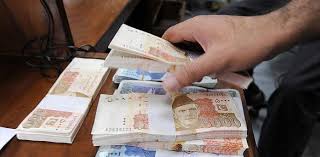Government to penalize banks for not increasing private lending
The government is considering reinstating an additional tax
on banks should their lending to the private sector fall below 50% of their
total deposits, with rates ranging from 10% to 16%. This measure aims to spur
economic activity by motivating banks to boost their financing to businesses,
particularly amid expected decreases in borrowing costs.
Following the State Bank of Pakistan’s (SBP) record-high
policy rate of 22%, loan defaults by businesses and households surged in 2023,
resulting in a notable increase in non-performing loans (NPLs) in the banking
sector, reaching a 14-year peak at Rs62 billion.
Pakistan
imposes 40% tax on banks' windfall profits from forex transactions
Under the proposed tax policy, banks with an
advance-to-deposit ratio (ADR) below 40% will face a 16% tax on income derived
from government debt securities like treasury bills and Pakistan Investment
Bonds. Banks with an ADR above 40% but below 50% will be subject to a lower tax
rate of 10%, while those maintaining an ADR above 50% will be exempt.
In 2023, most banks listed on the Pakistan Stock Exchange
(PSX) had an ADR below the 50% threshold, except for Samba Bank, Faysal Bank,
and The Bank of Punjab.
While some economists like Sana Tawfik from Arif Habib
Limited see this tax as a means to encourage genuine lending to the private
sector, others caution against increased risk-taking, especially in a
high-interest-rate environment that could exacerbate NPLs.
Bank
lending to the private sector shows upward trend
Amreen Soorani, Head of Research at JS Global, pointed out
that the rise in the policy rate to 22% over three years has raised concerns
about asset quality and potential provisioning expenses in the banking sector.
The temporary tax exemption in 2023 resulted in decreased loan disbursements
and subsequently lowered the overall ADR.
Soorani's analysis further indicated varied growth among
sectors such as textiles, individual consumers, agriculture, and energy, with
agriculture being the exception to stagnation observed in other sectors.
Source: Profit Pakistan
